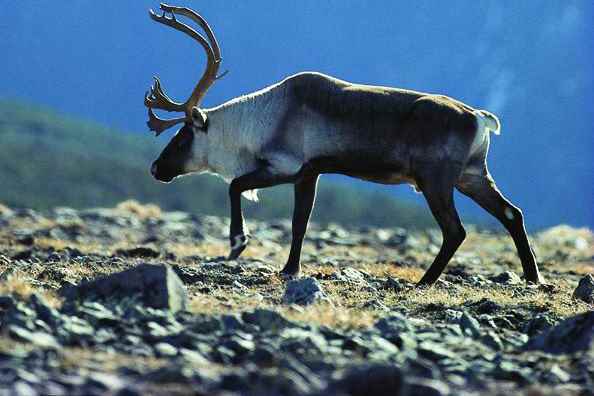The Quebec government must urgently protect the habitat of the caribou, reiterates an expert in the wake of the publication of new alarming data on different populations of this large deer.
Three caribou inventories were made public by Quebec on Monday: that of the mountain caribou population in Gaspésie (see box), that of the Nottaway forest-dwelling caribou population, in Nord-du-Québec, as well as that of populations Outardes and Caniapiscau woodland caribou, on the North Shore and in Saguenay–Lac-Saint-Jean.
The inventory of the Nottaway population, whose winter range totals 19,550 km2made it possible to count 240 individuals, which would represent a decrease of about 28% since the previous inventory, in 2016, observes the report.
As for the Bustard caribou population, 803 individuals were counted over an area of 28,576 km2 during the 2022 inventory; the report does not measure the evolution of the population in this sector, but the recent rates of adult survival and recruitment “are below the thresholds estimated to hope for the self-sufficiency of the population”, notes the document.
The low abundance south of 51e parallel poses a risk of local extinction for groups of caribou found in the south of the species’ range on the North Shore.
excerpt from the inventory report
Finally, 329 caribou were counted in the partial inventory of the southwest of the Caniapiscau population range, an area of 9,932 km2where demographics “suggest” herd growth, the report says.
“Positive”, says Quebec
Quebec considers that “some results of these inventories are positive and show that the protective measures deployed by [le gouvernement] give some encouraging results”, despite the fact that the populations surveyed and their recruitment rates remain “below critical thresholds”, said in a press release the Ministry of the Environment, the Fight against Climate Change, Wildlife and Parks (MELCCFP).
“I admit that I don’t really understand where the Ministry sees the positive,” reacted biologist Martin-Hugues St-Laurent, professor of animal ecology at the University of Quebec in Rimouski (UQAR).
The population of Nottaway “continues to decline”, the Bustard population is “below the threshold of self-sufficiency”, while “we do not know the vital rates” of the Caniapiscau population, he summarizes.
These are the populations that are most likely to be well, and things are not going well, so when we look at those who are most likely to be going badly, things are not likely to be better.
Martin-Hugues Saint-Laurent, University of Quebec at Rimouski
Protect habitat
The inventories published Monday by Quebec “confirm things that we have observed for several years, even decades”, notes Martin-Hugues Saint-Laurent.
“The first thing to do is to protect habitat [du caribou] what old-growth forests are, recalls the researcher.
“It takes an oratory on logging in the sectors that we have left, he says, and there are not many left. »
This is the conclusion also reached by the Independent Commission on Woodland and Mountain Caribou, which called in its report published last August to implement measures to protect large tracts of mature forests pending the publication of the caribou protection and recovery strategy that Quebec promises for next June.
Has the Legault government adopted protective measures since the publication of this report?
“Hard to say, the government has been super secret since the report,” replies Mr. Saint-Laurent.
Minister Benoit Charette, now responsible for the file, did not answer the question directly, but said in a written statement sent to The Press by his cabinet that “the Caribou Strategy will include several measures to restore the populations of this emblematic species”, further recognizing that the data published on Monday “confirm the decline of caribou in several sectors of Quebec”.
Gaspésie caribou: stable on the brink of extinction
The Gaspésie mountain caribou population remains on the brink of extinction, shows the 2021 annual inventory released Monday. Only 33 caribou were counted during the overflight of an area of 246 square kilometers (km2) covering Mounts Albert, McGerrigle and Logan, where caribou are concentrated during the rutting period, compared to 29 caribou the previous year. Quebec sees “demographic stability of the population”, after a significant drop in the previous decade. The Gaspésie caribou herd numbered some 200 individuals in 2008, recalls biologist Martin-Hugues St-Laurent, who believes that the current figures are not encouraging. “It’s not the big tanks,” he says. The Gaspésie caribou population remains in “great precariousness”, recognizes the inventory report, which highlights another worrying aspect: a decrease in the recruitment rate, or the number of calves per female.
